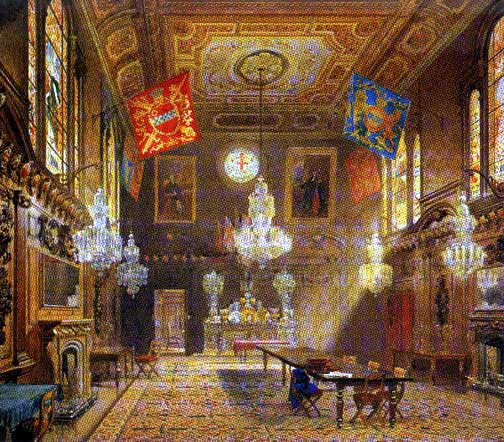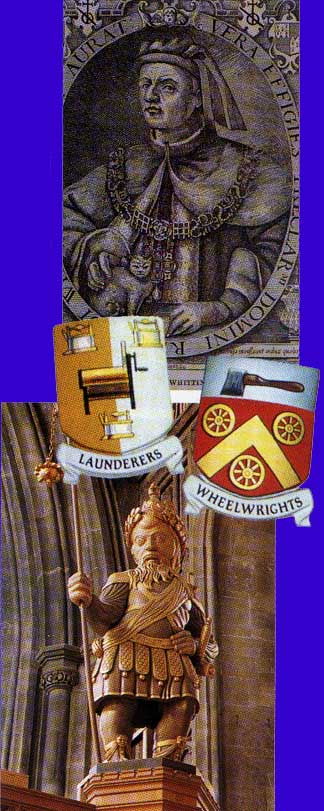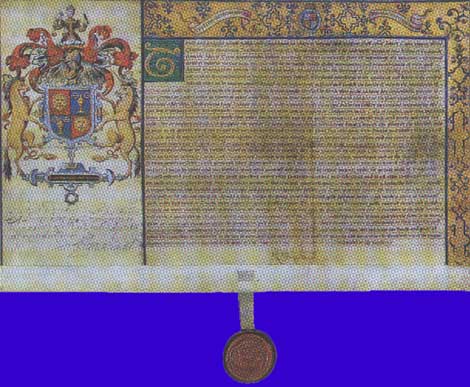
|
 |
 |
|
|
Members
could seek medical aid when ill and even in death help was at hand
with funeral arrangements, vigils for the dead and the ringing of
bells. Each guild had a patron saint and strong links with a monastery
or church. Care of the infirm and elderly was always a major concern. |
The
Mercers" Company is the City's premier livery company, - based upon
an order of precedence decreed by the Lord Mayor in 1515. Mercers,
their name deriving from the French word for merchant, were chiefly
concerned with the export of wool and the import of linen and luxury
fabrics in medieval times.
But the best-known livery company is probably the Goldsmiths. Its hall is a magnificent building situated northeast of St Paul's Cathedral and is one of London's hidden secrets. Goldsmiths work in silver as well as gold, and from the 14th century leading goldsmiths were appointed by the sovereign to oversee regulations concerning the quality of coin and standards for precious metals. No gold or silver vessel was to leave the hands of the workers until it had been inspected by Guardians of the Craft and marked with the leopard's head said to be taken from the royal arms, the King's Mark. |